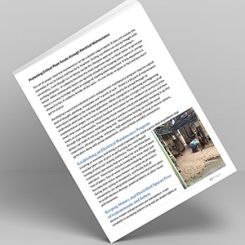The global multiple orifice flow control valves market is estimated to exhibit growth during the forecast period of 2018 to 2028, according to a report from Persistence Market Research (PMR). Growth will be driven by factors such as recovery of crude oil prices, growth in shale gas drilling and production activities, and opportunities in nuclear power generation. The global multiple orifice flow control valves market was valued at around $300 million in 2017 and is expected to expand at a compound annual growth rate (CAGR) of 2.4 percent during 2018 to 2028. The demand for multiple orifice flow control valves has been driven by the swelling production of oil and gas, chemicals, petrochemicals and growing investments in water and wastewater and power generation. In addition, the replacement of legacy multiple orifice flow control valves is necessary to enhance flow without any interruptions. These factors are expected to be responsible for the projected growth of the multiple orifice flow control valves market.

- On the basis of valve diameter, the 12- to 24-inch multiple orifice flow control valves segment accounts for a prominent share in the global market, and the adoption of carbon steel-based multiple orifice flow control valves is gaining revenue growth over others.
- Based on operation, the automatic-based multiple orifice flow control valves segment is estimated to account for a large market share. Currently, most end users and industrial operators are looking for automated types of operations to reduce their operational costs. The electric-based automated multiple orifice flow control valves segment is expected to drive revenue growth during the forecast period.
- Multiple orifice flow control valves find significant application in various end-use industries such as oil and gas, chemicals and petrochemicals, energy and power, and water and wastewater. The oil and gas segment is estimated to be a prominent end-use industry segment in the multiple orifice flow control valves market. Developments in orifice plates and growth in remote operations in some of the end-use industries are expected to drive the adoption of advanced multiple orifice flow control valves.

